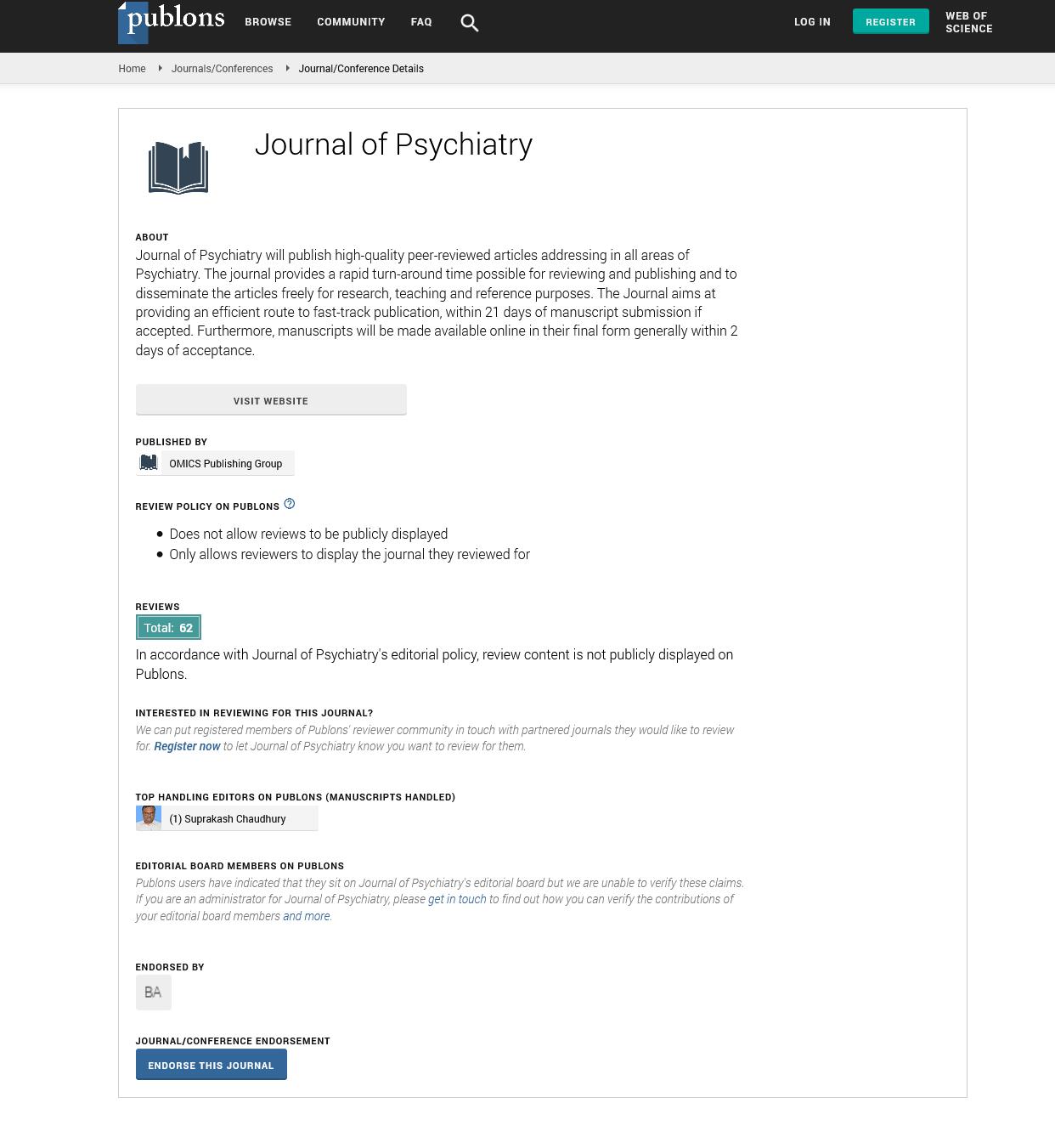Indexed In
- RefSeek
- Hamdard University
- EBSCO A-Z
- OCLC- WorldCat
- SWB online catalog
- Publons
- International committee of medical journals editors (ICMJE)
- Geneva Foundation for Medical Education and Research
Useful Links
Share This Page
Open Access Journals
- Agri and Aquaculture
- Biochemistry
- Bioinformatics & Systems Biology
- Business & Management
- Chemistry
- Clinical Sciences
- Engineering
- Food & Nutrition
- General Science
- Genetics & Molecular Biology
- Immunology & Microbiology
- Medical Sciences
- Neuroscience & Psychology
- Nursing & Health Care
- Pharmaceutical Sciences
First case of brain protection in out of hospital cardiac arrest
16th World Congress on Psychiatry and Psychological Syndromes
April 24-25, 2017 Las Vegas, USA
Guy Hugues Fontaine
Université Pierre et Marie Curie, France
Scientific Tracks Abstracts: J Psychiatry
Abstract:
The case of my wife, a 73 year-old psychiatrist, experienced OHCA on June 2011 in the living room where she was watching the BBC world channel on TV. I immediately laid her down on the floor. There was no femoral pulse. I initiated standard CPR including chest compression (90 compressions per minute) for about 30 seconds followed by mouth to mouth breathing. I then resumed cardiac massage since she did not regain consciousness and there was no femoral pulse. I had a defibrillator in the basement of my house because of my interest in the Fulguration procedure. Since I had no gel to apply between the electrodes and the skin to decrease the impedance, I applied saliva to the electrodes and then gave a third shock. This last shock was successful, and the femoral pulse returned strong and regular. The femoral pulse remained stable, regular and strong. I estimated that about 6 minutes elapsed between her loss of consciousness and the return to a stable circulation. I then addressed the issue of possible brain protection. Fortunately, I had a smaller portable bottle now called the ‚??Fontaine bottle‚?Ě that was designed with a gas regulator to be used with a nasal cannula inserted into the nose to provide protection of the brain by nasal cooling. When the injector was in position I opened the valve of the cylinder and induced nasal cooling by expansion of the CO2. Her hospital course was notable for repeated episodes of ventricular fibrillation with the same ECG pattern of Torsade de Pointes-like tachycardia degenerating in Ventricular Fibrillation in a few seconds. The absence of Troponin release demonstrated that she had no acute myocardial infarction which was my main concern. When sedation was stopped, she was fully awake and the tracheal tube was removed. Psychological test showed that she had absolutely no neurologic deficit. In particular, she could remember 9 telephone numbers. During the follow-up, she experienced three more episodes of sudden death with drop (one with injury of the face) immediately converted by the defibrillator leading to an increase of Bisoprolol. No more episode of arrhythmia up to now almost 7 years since the SD episode.
Biography :
Guy Hugues Fontaine has made 17 original contributions in the design and the use of the first cardiac pacemakers in the early 60s. He has serendipitously identified ARVD during his contributions to antiarrhythmic surgery in the early 70s. He has developed the technique of Fulguration to replace surgery in the early 80s. He has 900+ publications including 201 book chapters. He has been the Reviewer of 26 scientific journals both in basic and clinical science. He has served for 5 years as a Member of the Editorial Board of Circulation.
Email: guy.fontaine2@numericable.fr

